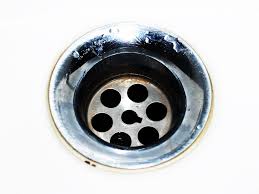Introduction
You’re brushing your teeth or doing dishes, and suddenly tiny moth-like insects flutter up from your sink drain. They’re drain flies , and while they’re harmless, they’re also stubborn guests that just won’t leave.
In this guide, you’ll learn why drain flies invade your home, how to spot the early signs, and most importantly, how to get rid of them for good. We’ll break down the science behind these insects and share real-life solutions that work.
Meet the Drain Fly
Drain flies (also known as moth flies or sink flies) belong to the family Psychodidae. They’re tiny, fuzzy insects usually measuring only 1.5–5 mm long.
Appearance
- Shape: Short, squat body
- Wings: Fuzzy, leaf-shaped wings that give them a moth-like look
- Color: Usually gray or brown
- Behavior: Slow flyers; often seen resting on walls near sinks or showers
Life Cycle
Drain flies live fast:
- Eggs hatch in 48 hours.
- Larvae feed for 9–15 days in moist organic material.
- Adults live around two weeks.
In warm, moist environments, populations can explode quickly.
Why Drain Flies Choose Drains
Drain flies thrive in places most humans find disgusting , wet drains, sewers, and slime-filled pipes. Your home’s plumbing offers the perfect environment:
- Moisture: Essential for their eggs and larvae.
- Biofilm: The slimy layer lining many pipes serves as their primary food source.
- Organic debris: Grease, soap scum, hair, and food scraps create a buffet for drain fly larvae.
A single teaspoon of slime can host hundreds of drain fly larvae.
How to Identify an Infestation
Seeing a few flies doesn’t always mean an infestation, but it’s often the first warning sign.
Signs You May Have Drain Flies
- Tiny moth-like flies hanging around sink, tub, or shower drains.
- Clusters of flies resting on nearby walls.
- A faint, musty odor from your drain.
- Slimy residue in pipes or around drain openings.
- Slow-draining sinks, which indicate built-up organic matter.
To confirm they’re coming from your drain, cover the drain with clear plastic overnight. If flies appear under the plastic, your drain is the source.
The Biofilm Connection
Drain flies don’t just live in standing water , they feed on biofilm inside your pipes.
What is Biofilm?
Biofilm is a slimy matrix of:
- Bacteria
- Fungi
- Organic waste
It coats pipe walls and traps grease, hair, and debris. Drain flies lay eggs in biofilm, and their larvae eat it for food.
That’s why simply killing adult flies won’t solve the problem, you must remove the biofilm.
Why Bleach Often Fails
Pouring bleach down the drain is a common DIY fix, but it rarely works for drain flies.
Here’s why:
- Biofilm shields larvae from chemicals.
- Bleach quickly dilutes in water, losing effectiveness.
- It may kill surface bacteria but rarely penetrates thick slime layers.
While bleach might kill some larvae near the surface, deeper biofilm often survives untouched. The infestation returns within days.
Mechanical Cleaning vs Chemicals
So what actually works to kill drain fly larvae?
Mechanical Cleaning
Physically scrubbing or brushing pipe interiors removes biofilm, larvae, and eggs. Tools like:
- Long pipe brushes
- Drain snakes
- High-pressure water jets
can dislodge the slimy habitat that drain flies rely on.
Chemical Treatments
Chemical drain cleaners can sometimes help but are often less effective because they don’t always penetrate biofilm fully.
Combination Method: For stubborn infestations, professionals often combine mechanical scrubbing with enzymatic or chemical treatments for a thorough clean.
Best Enzyme Cleaners for Drain Flies
Enzyme cleaners break down organic matter without harsh chemicals. They’re one of the best solutions for drain flies because:
- They digest biofilm, removing the food source.
- They’re safe for plumbing and septic systems.
- They’re non-toxic for humans and pets.
Recommended Enzyme Products
- Green Gobbler Enzyme Drain Cleaner
- Bio-Clean Drain Septic Bacteria
- Zep Drain Care Enzyme Cleaner
For best results:
- Apply at night, when pipes won’t be used for several hours.
- Repeat treatments for several days to break the breeding cycle.
Drain Trap Maintenance Tips
Preventing drain flies is far easier (and cheaper) than fighting them after they arrive.
Good Habits
- Run hot water down your drains weekly.
- Clean sink stoppers and drain covers.
- Avoid pouring grease or food scraps down the drain.
- Use enzyme cleaners monthly in kitchens and bathrooms.
- Regularly check unused sinks or guest bathrooms for stagnant water.
When to Call a Professional
Sometimes a drain fly problem is bigger than DIY can handle. Call a drain cleaning professional if:
- Flies persist after thorough cleaning and enzyme treatments.
- You suspect a broken pipe or leak beneath floors or walls.
- Multiple drains are infested.
- The infestation reappears quickly after treatment.
Professionals have tools like video inspections and hydro-jetting to locate hidden breeding areas.
Drain Fly Myths Debunked
Let’s bust a few common myths:
Myth 1: Drain flies bite humans.
False. Drain flies do not bite, sting, or feed on blood.
Myth 2: Bleach instantly kills drain flies.
Partly false. Bleach may kill surface larvae but rarely penetrates biofilm deep enough to eliminate infestations.
Myth 3: Vinegar alone will solve the problem.
False. Vinegar can help clean minor debris but won’t dissolve established biofilm or kill larvae effectively.
Myth 4: Drain flies mean your home is dirty.
False. Even the cleanest homes can develop biofilm in drains. Drain flies simply exploit moist, hidden spaces.
Myth 5: Drains must be replaced to get rid of flies.
False. Almost all drain fly infestations can be resolved without replacing pipes.
FAQs About Drain Flies
Do drain flies bite?
No. Drain flies do not bite or sting humans. They’re harmless but a nuisance.
Can I use vinegar to kill drain flies?
Vinegar may help reduce odors and minor debris, but it’s usually not strong enough to kill larvae or remove biofilm fully.
Why do they keep coming back?
If biofilm remains in your pipes, drain flies will return. Adult flies can also lay new eggs quickly, restarting the infestation cycle.
Are drain flies harmful to health?
Drain flies themselves are harmless and don’t spread diseases. However, biofilm can harbor bacteria, so it’s wise to eliminate the source.
How long does it take to eliminate them?
With proper cleaning and enzyme treatments, small infestations may resolve in a few days to a week. Severe infestations can take several weeks to fully eliminate.
Conclusion
Drain flies might be harmless, but they’re persistent and unsightly guests in your home. The key to beating them is understanding their love affair with biofilm and targeting their hidden breeding grounds.
By combining mechanical cleaning, enzyme treatments, and good drain hygiene, you can evict these tiny pests for good, and keep your plumbing running smoothly.
For more practical drain cleaning advice, check out other guides at LiquidFireDrainCleaner.com or reach out if you’re battling a stubborn infestation.





